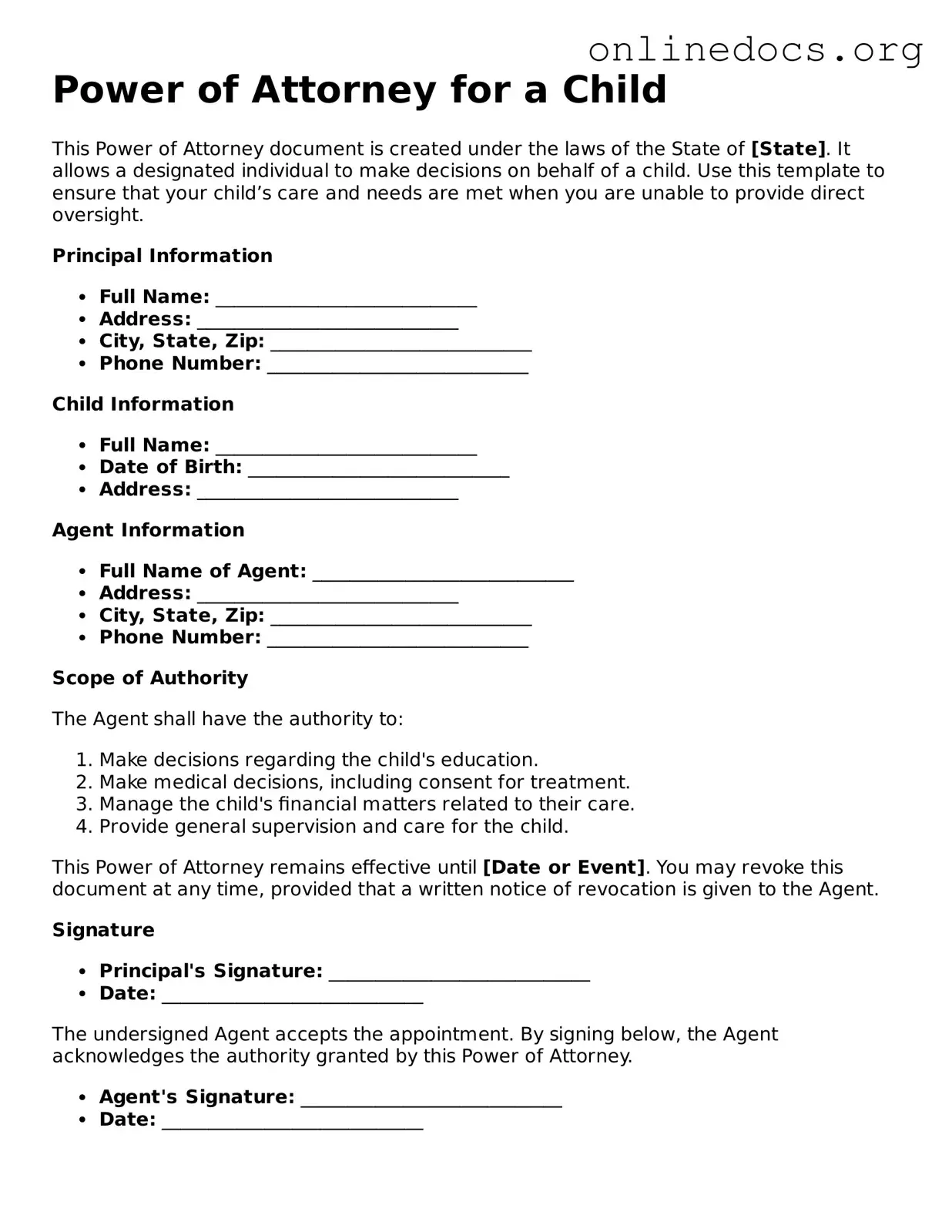The Guardianship Agreement is similar to the Power of Attorney for a Child form in that it grants authority over a child's care and welfare to another individual. This document is often used when parents are unable to provide care, whether due to illness, travel, or other circumstances. Like the Power of Attorney, it allows the designated guardian to make decisions regarding education, healthcare, and daily living needs for the child. However, a Guardianship Agreement is generally more permanent and may require court approval.
The Child Custody Agreement outlines the terms of custody and visitation for a child following a divorce or separation. While the Power of Attorney for a Child allows temporary authority for specific decisions, the Child Custody Agreement establishes a more formal arrangement regarding where the child will live and how time will be shared between parents. Both documents aim to serve the best interests of the child, but they differ in their scope and duration of authority.
The Medical Authorization Form provides permission for a designated individual to make medical decisions on behalf of a child. This document is particularly useful in emergency situations where a parent may not be available. Similar to the Power of Attorney for a Child, it allows the appointed person to consent to medical treatment, but it is typically limited to health-related decisions rather than broader aspects of a child's upbringing.
The Medical Power of Attorney is a document that allows a person to make healthcare decisions on behalf of another individual, typically when that person is unable to make those choices themselves. Similar to the Power of Attorney for a Child, this form grants authority to a trusted individual, usually a family member or friend, to act in the best interest of another's health and well-being. Just as a parent can designate someone to oversee their child's affairs, this document ensures that someone is empowered to make critical medical decisions when necessary and ensures continuity of care in medical situations. For those looking for additional legal forms, resources like californiapdfforms.com/operating-agreement-form/ provide valuable information.
The Temporary Care Agreement is another document that shares similarities with the Power of Attorney for a Child. This form is used when parents need to temporarily transfer care of their child to another person, such as a relative or friend. The agreement outlines the duration of care and the responsibilities of the caregiver. While both documents facilitate temporary arrangements, the Power of Attorney for a Child may encompass a wider range of decision-making powers beyond just caregiving.
The Adoption Agreement is a more formal legal document that permanently transfers parental rights from birth parents to adoptive parents. While the Power of Attorney for a Child grants temporary authority for decision-making, the Adoption Agreement establishes a lifelong relationship and responsibility. Both documents prioritize the child's welfare, but they differ significantly in permanence and legal implications.
The Child Support Agreement, while focused primarily on financial obligations, relates to the Power of Attorney for a Child in that both documents address the welfare of a child. The Child Support Agreement outlines the financial responsibilities of a non-custodial parent, ensuring that the child’s needs are met. In contrast, the Power of Attorney allows for the delegation of decision-making authority, but both are essential in securing a stable environment for the child.
